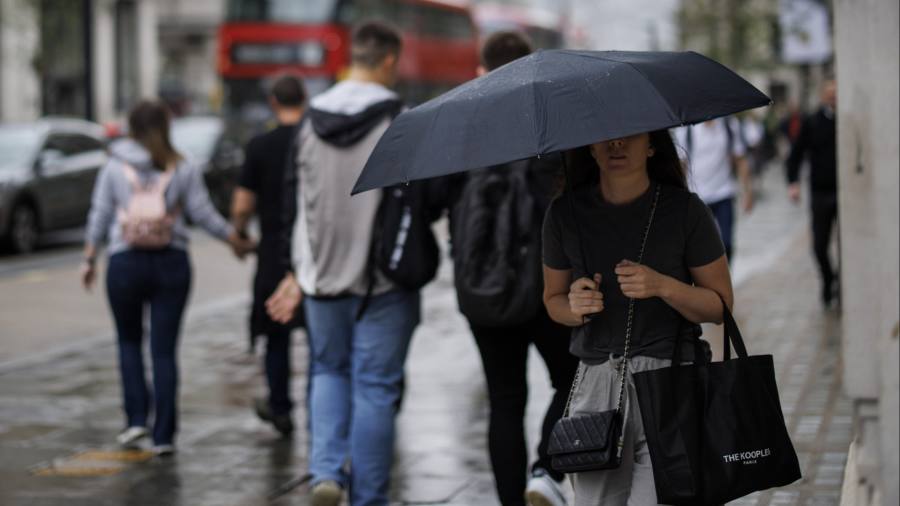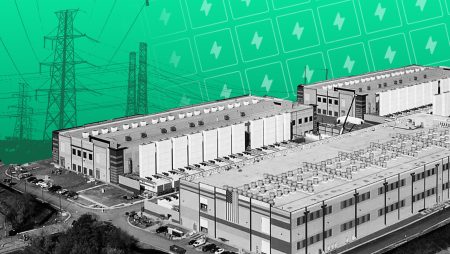Receive free UK economy updates
We’ll send you a myFT Daily Digest email rounding up the latest UK economy news every morning.
The UK economy contracted more than expected in July as unusually wet weather and strikes hit spending and activity.
Gross domestic output dropped by 0.5 per cent between June and July, after growing the previous month, data published by the Office for National Statistics showed on Wednesday. This was a larger drop than the 0.2 per cent fall forecast by economists polled by Reuters.
Darren Morgan, the ONS’s director of economic statistics, said: “In July, industrial action by healthcare workers and teachers negatively impacted services and it was a weaker month for construction and retail due to the poor weather.”
“Manufacturing also fell back following its rebound from the effect of May’s extra Bank Holiday,” he added.
Sterling extended Tuesday’s losses to trade down 0.3 per cent on Wednesday at $1.2446. Investors’ expectations of future interest rate rises have been edging lower in recent days, but traders still expect the Bank of England to lift rates on September 21 to 5.5 per cent. A majority of investors now believe that will be the BoE’s final rate increase.
Kitty Ussher, chief economist at the Institute of Directors, noted that while one-off factors of industrial action and wet weather hit activity in many sectors, neither explains the weakness in information and communication, administrative services and manufacturing.
“Overall, today’s data should give the Bank of England pause for thought when it meets next week,” said Ussher.
Many economists think that the impact of 14 consecutive increases in interest rates will weaken the economy further in the months ahead.
Yael Selfin, chief economist at KPMG UK, said: “With the backdrop of weakening global economic conditions coupled with the lagged impact of higher interest rates, the UK economy could struggle to keep its head above water in the remainder of the year.”
But the strong pace of wage growth provides some source of optimism for Samuel Tombs, economist at Pantheon Macroeconomics. “Households’ real expenditure will continue to increase, ensuring that the wider economy avoids a recession,” he said.
In the three months to July, a less volatile measure of economic performance, output was up by 0.2 per cent compared with the previous three months, continuing the weak performance since late 2021.
The figures do not yet incorporate the large output revisions announced earlier in the month for the pandemic years. As such, they are not indicative of how the economy, or its sectors, evolved relative to the year before Covid-19.
“Considering the size of the revisions up to 2021, we prepare ourselves for a substantial change in the reported size of the economy come the end of the month — and potentially a wholesale rewrite of the narrative of how individual sectors have performed through the pandemic and beyond,” said Ellie Henderson, economist at the consultancy Investec.
The main driver of the fall in July was the services sector, where output dropped by a larger than forecast 0.5 per cent. Output in human health activities was down by 3.4 per cent, reflecting industrial action by NHS staff. Education, also affected by strikes, human resources and information and communication also reported contracting output in the month.
In contrast, sports activities and amusement and recreation activities grew by 12.4 per cent and creative, arts and entertainment grew by 4.9 per cent as the month was busy with events such as tennis at Wimbledon and the women’s football World Cup.
Manufacturing production was down by 0.8 per cent, with 9 out of 13 sectors reporting a contraction.
Construction also reversed the gain of the previous month posting a 0.5 per cent fall, largely due to the wet weather. The ONS also reported that adverse weather conditions also limited output in retail and hospitality.
Read the full article here















